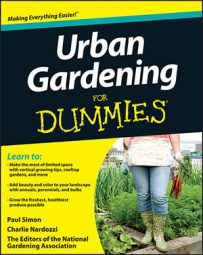If you’re not yet ready to go the grow-your-own-seedling route, head to your local garden center to buy your annual flowers and vegetables as transplants. Here are some things to keep in mind as you hunt around for the best plants:
Check the tops. Healthy transplants have dark green leaves all the way to the soil line. Yellow leaves may be a sign of stressed or underfed plants.
Check the roots. Take a peek at the root systems of some of the transplants. The roots should be white in color and fill the soil root ball; they shouldn’t be growing out the drainage holes of the pot.
Don’t buy a plant whose roots are winding around in circles; that plant is root bound, meaning the roots will take extra time to grow into the native soil, slowing the growth of your plant.
Avoid flowering plants. Although seeing flowers on your new transplants is exciting, it’s best to pick vegetables that aren’t flowering at all or annual flowers with few flowers. Flowers take a lot of energy from plants, and at this stage, you want your veggie plants to spend that energy growing better roots, not flowers.
For annual flowers, you may want to see the actual color of the flowers, so finding transplants with a few flowers is perfectly fine. But with both vegetables and annual flower transplants, you should snip off the flowers when you get your plants home so they can grow healthier and eventually form more flowers.
Small is beautiful. Small transplants with healthy root systems are generally a better buy than large transplants. Small transplants go through less shock when you plant them in your garden because they have less foliage demanding nutrients and water from the roots. Large transplants, on the other hand, may take longer to get established in your garden.
In fact, smaller transplants often catch up or even pass the larger ones because they transplant without skipping a beat.

